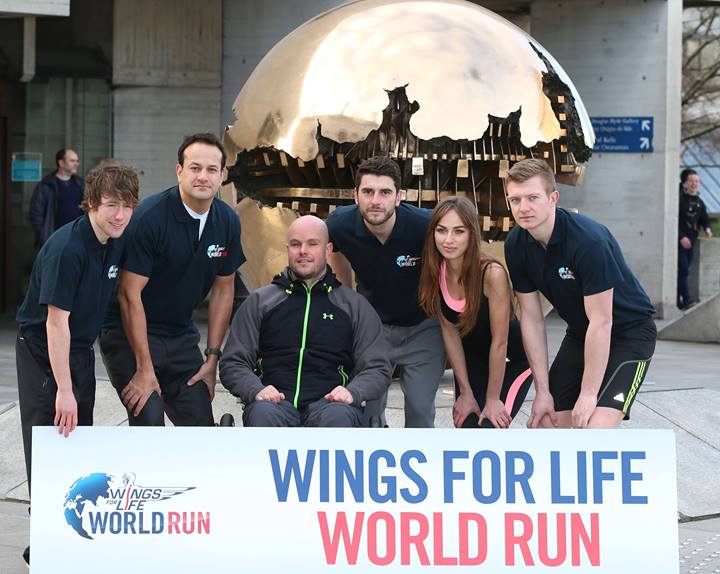
For many people, being blind and paralysed is not the definition of an athlete.
“From the moment I hit the ground I joined what is a global community of people who don’t have any hope of recovery.”
Becoming fully blind at 22 did not stop Mark Pollock from breaking world records. In 2009, Mark became the first blind man to reach the South Pole. He has always been involved with sports, including rowing in 2002 Commonwealth games and running six marathon in a week across the Gobi Desert.
However in 2010, the co. Down native suffered another blow when a fall from a second story window left him paraplegic. Pollock now serves as an ambassador for Wings for Life, a Redbull-sponsored marathon which aims to donate 100 per cent of its proceeds to spinal cord injury research.
But this isn’t your run-of-the-mill marathon. Wings for Life will span 35 countries across six continents and the Ring of Kerry has been chosen as a location. Every single race will begin at 10:00 GMT, meaning that every race will be equally paced.
There is also no finish line. “For us it’s a little more quirkier. We have a start but we also have this catcher car which starts 30 minutes after the runners do,” International Director Colin Jackson said, speaking alongside Pollock at the Google Hangout session to promote the race. “Once the car catches you, the race is over. Ultimately, you decide your finish line.”
Wings for Life was created by Redbull founder Dietrich Mateschitz and motocross champion Hans Kinigadner after Kinigadner’s son was left tetraplegic (paralysed from the neck down) following a racing accident. They both realised how underfunded spinal cord injury research is.
Cambridge researcher Dr. Jessica Kwok explained that spinal cord injury is like a bomb dropped on a ‘well-paved road’. According to Dr. Kwok, the answer is found in our own bodies.
Myelin, a fat-like substance protecting our nerves, produces a protein called Nogo-A which stops nerve growth. Our body also produces carbohydrates, chondroitin sulphate proteoglycans (CSPGs), after the injury. “What I’m trying to do is a stop these proteins so that the cars in the highway can go through the areas.”
Scientists have found an enzyme, chondroitin ABC, in bacteria which can stop the growth of Nogo-A and and CSPGs temporarily. “It’s not sustainable enough so we’re trying to find a replace which is more sustainable, more durable, and less invasive.”
There are 145 clinical trials in spinal cord injury. Wings for Life hopes to raise big proceeds to fund the scientific research that Dr. Kwok is a part of.
So why Kerry? As Richard Donovan explained at the Hangout session, it was the ‘brutal terrain and spectacular scenery’. The race will start in Killarney and stretches along the flat N70 until it reaches Killorglin which is mountainous and rugged. “I think it’s part of the Irish psyche to enjoy hurting themselves.”
Jackson made it clear that the marathon is not just for professionals: “The key thing is that this is a fun run! You can come up with your own challenges.” He stressed that personal goal, realistic goals are what’s important and added: “There will be people that will brag that the car caught them first!”
Aura McMenamin




Leave a Reply